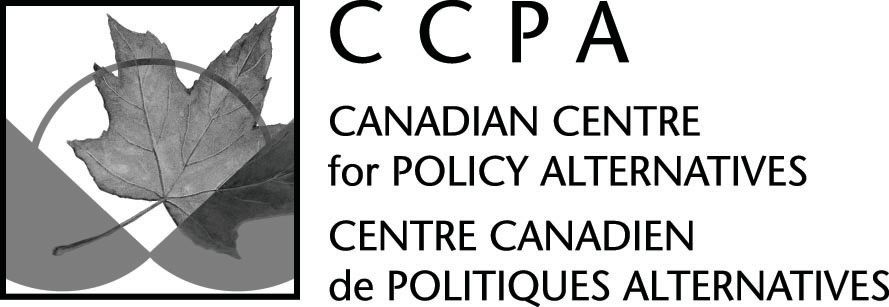Federal election primer:
What we can't ignore when it comes to reconciliation

“The structures and processes of colonization, which are often relegated to the past, are very much factors today.”
As part of our ongoing series looking at progressive alternatives that we hope to find in all party platforms this fall, this blog will examine what policy actions a progressive government could take to forward reconciliation, including addressing high rates of child poverty, fully implementing the United Nations Declaration on the Rights of Indigenous Peoples (UNDRIP), and increasing investments in much-needed on-reserve infrastructure. As with the previous blogs, these alternatives can be found in our 2019 Alternative Federal Budget (AFB). As a settler-based organization, CCPA is committed to working with Indigenous research partners to continue highlighting the urgent need to follow through on promises to work towards reconciliation in our public policy, governments and communities.
The fall election season is officially upon us and this year, the federal government’s relationship with Indigenous peoples is sure to be a central point that leaders will be asked about during the campaign.
In past years, a number of inquiries and commissions, including the Truth and Reconciliation Commission and the National Inquiry into Missing and Murdered Indigenous Women and Girls, have been established to investigate the legacy of violence and oppression against Indigenous peoples and the ensuing government inaction. Their recommendations have a common theme: to achieve true reconciliation, we must prioritize the revitalization of Indigenous traditions and the development of First Nations governance structures, while acknowledging the continued legacy of colonization.
As leaders debate the federal track record on Indigenous issues, there are several key issues that cannot, and should not be ignored.
Child poverty

First Nation children on reserve continue to suffer poverty rates at three times[1] the national average, with basically no change since Statistics Canada started tracking data in 2006. Indigenous children living in poverty are more likely to experience homelessness, poor health and additional impacts on overall life outcomes.
“Living in poverty also includes an increased likelihood of child welfare involvement and placement. First Nations children are 6 to 8 times more likely to be taken into care than non-Aboriginal children.”
Exacerbating the situation was the two per cent cap on social spending has been in place since 1996 on reserves, which was removed in late 2015. As inflation averaged 2% over that period, the cap meant that if a reserve’s population was growing at all (and First Nations have the fastest growing population in Canada), per-capita services had to be cut.
Such policies reflect and reinforce the series of injustices that stain Canada’s history, like the 60s Scoop, residential schools and the high rate of missing and murdered Indigenous women and girls.
Piecemeal reform has not improved child poverty levels, and lifting the funding cap is not enough on its own to hasten the glacial pace of reducing poverty rates. Political leaders must treat First Nations child poverty rates with the urgency it requires. Canada can afford to do better, and has an obligation to do so.
Infrastructure

Over the past several years, there has been movement on policy impacting Indigenous peoples, including the removal of the capricious two per cent cap on spending, and new investments in health, water, housing and infrastructure generally on reserves.
But despite investments made over the past three federal budgets, there are still urgent needs: communities continue to wait for long-awaited improvements to clean water infrastructure and emergency response services. As of August 2, fifty-six long term drinking water advisories remained in place on reserves across the country.
We recommend all parties commit to investing $5 billion over three years in these areas, as called for in the 2019 AFB. The most recent federal budget committed $1 billion over a five-year period.
“The ongoing exclusion of First Nations governments from a fair share in the wealth of their lands must end. It’s time.”
Governance

New moneys are flowing to First Nations governments and are booked into the fiscal framework for years to come. Capacity building in First Nations governance, after years of chronic underfunding, is critical to maximizing the impact of these new funds. The AFB targets $2.5 billion over the next three years to building First Nations governance capacity; the latest federal budget has devoted $48 million over two years. Clearly all party platforms have plenty of room to improve.
For years, the funding cap on First Nations projects has limited the extent of work that community leaders are able to do. Although this cap has been lifted, services are far from comparable to that available from federal, provincial and municipal governments to others in Canada and funding is still not enough to develop sustainable economies. This continues to hamper First Nations leaders’ governance, leaving them unable to hire and retain staff and create independent development projects.
During the 2015 election, the Liberal party promised to review all federal laws that failed to respect Indigenous rights and also announced that new laws would be created in accordance with the UNDRIP, which includes protection of collective rights. A framework was touted in early 2018 with the goal of introducing legislation and policy that would “recognize Indigenous governments, and ensure rigorous, full and meaningful implementation of treaties and other agreements.” However, the framework was criticized by some for its disrespectful process and, after many delays, is now appears stalled. UNDRIP has been accepted by many First Nations as the foundation on which all new laws, legislative frameworks and treaties should be based; post-election, any legislation affecting the governance of First Nations territories should be done in accordance with it.
Reconciliation

One of the Truth and Reconciliation Commission’s (TRC) recommendations was a call for the revitalization of First Nations languages. This is of critical importance: without rapid action, many of these languages will be lost as their few remaining speakers age. Budget 2019 included $300 million over five years for language funding which, while a step in the right direction, is nowhere near enough for the sustained revitalization that has been recommended by the TRC. The higher goal of $1.2 billion over three years, as called for in the 2019 AFB, is a more appropriate target.
Merely acknowledging the Truth and Reconciliation Commission’s 94 Calls to Action is not enough. The ongoing work on the TransMountain pipeline, despite fierce resistance from many of the Indigenous peoples through whose land it passes is a telling sign that we have work left to do on making the TRC’s recommendations a reality. Whatever investments are made in Indigenous governance and infrastructure must be accompanied with respect for Indigenous sovereignty, free from the colonial tropes that have been present in Canadian political circles for far too long.
The author would like to thank Dan Wilson and David Macdonald for input on an earlier version of this blog post.
Alyssa O’Dell is the media and public relations officer for the CCPA’s national office.
Endnotes
[1] Natasha Beedie, David Macdonald and Daniel Wilson (2019), Towards Justice: Tackling Indigenous Child Poverty in Canada. Assembly of First Nations, Upstream: Institute for a Healthy Society, and the Canadian Centre for Policy Alternatives.
Footage of the stained glass window in Parliament commemorating the legacy of Indian Residential Schools from Remembering the Past: A Window to the Future, https://www.aadnc-aandc.gc.ca/eng/1368628725613/1368628900859


